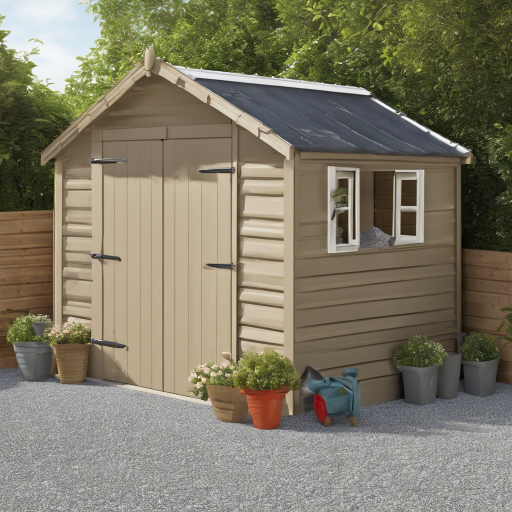Do you have to fill a plastic shed base with gravel?
Do You Have to Fill a Plastic Shed Base with Gravel?
Plastic shed bases have become increasingly popular options for those looking to add a sturdy foundation to their sheds. These bases, made from durable plastic materials, offer several advantages over traditional concrete or wooden bases. One common question that arises when using a plastic shed base is whether it needs to be filled with gravel. In this article, we will explore the reasons behind filling a plastic shed base with gravel and the benefits it provides.
Why Fill a Plastic Shed Base with Gravel?
Filling a plastic shed base with gravel offers several key benefits. These include:
1. Enhanced Stability and Support
The primary reason for filling a plastic shed base with gravel is to enhance stability and provide additional support. The weight of the gravel helps to secure the base in place, preventing it from shifting or moving, particularly in areas with loose soil or high wind conditions. This added stability ensures that your shed remains secure and level, preventing any potential damage.
2. Improved Drainage
Another advantage of filling a plastic shed base with gravel is that it improves drainage. The gaps between the gravel allow water to flow freely, preventing any buildup underneath the shed. This is especially important if your shed is located in an area prone to heavy rainfall, as it helps to avoid water pooling, which can lead to dampness and damage.
3. Weed Suppression
Filling the base with gravel can also help suppress weed growth. The gravel acts as a barrier, preventing sunlight from reaching the soil underneath and inhibiting weed germination. This not only reduces the amount of time and effort required for weed control but also helps to keep your shed area cleaner and more aesthetically pleasing.
4. Pest Prevention
Gravel-filled bases can deter pests from making their way under your shed. The lack of direct contact between the soil and the base, along with the rough texture of the gravel, can discourage pests like rodents and insects from nesting or burrowing underneath. By creating a barrier, you can minimize the risk of damage to your shed's foundation and potential infestations.
How to Fill a Plastic Shed Base with Gravel
Now that we understand the benefits of filling a plastic shed base with gravel, let's explore the process of doing so. Here are the steps to follow:
1. Prepare the Area
Before filling the plastic shed base with gravel, it is essential to prepare the area properly. Remove any existing vegetation, debris, or obstacles that may hinder the installation process. Level the ground to ensure a stable base for your shed.
2. Lay a Geotextile Membrane
To further enhance weed control and prevent the growth of vegetation, lay a geotextile membrane over the prepared area. This membrane acts as a barrier, reducing the chances of weeds penetrating through the gravel. Trim the membrane to fit the size and shape of your shed base.
3. Fill the Base with Gravel
Use a shovel or a wheelbarrow to fill the plastic shed base with gravel. Start filling from one corner and work your way across the base, ensuring an even distribution. For optimal results, use angular gravel with a size range between 10mm and 20mm. This size provides stability and prevents the gravel from slipping through the gaps in the base.
4. Compact the Gravel
Once the base is filled with gravel, use a compactor or tamper to compress the gravel. This compaction helps to create a firm and solid surface, increasing stability and preventing the gravel from shifting over time. It is essential to ensure a well-compacted base to maintain the long-term integrity of your shed.
5. Check for Levelness
After compacting the gravel, check for levelness using a spirit level. Adjust the gravel as necessary to achieve a level surface across the entire base. This step is crucial to ensure that your shed sits evenly on the base, preventing any potential structural issues in the future.
Conclusion
In summary, filling a plastic shed base with gravel provides enhanced stability, improved drainage, weed suppression, and pest prevention benefits. By following the steps outlined above, you can effectively fill your plastic shed base with gravel and create a solid foundation for your shed. Remember to properly prepare the area, lay a geotextile membrane, fill the base with gravel, compact it thoroughly, and check for levelness. By taking these necessary measures, you can ensure a secure and durable base for your shed, prolonging its lifespan and providing peace of mind.

